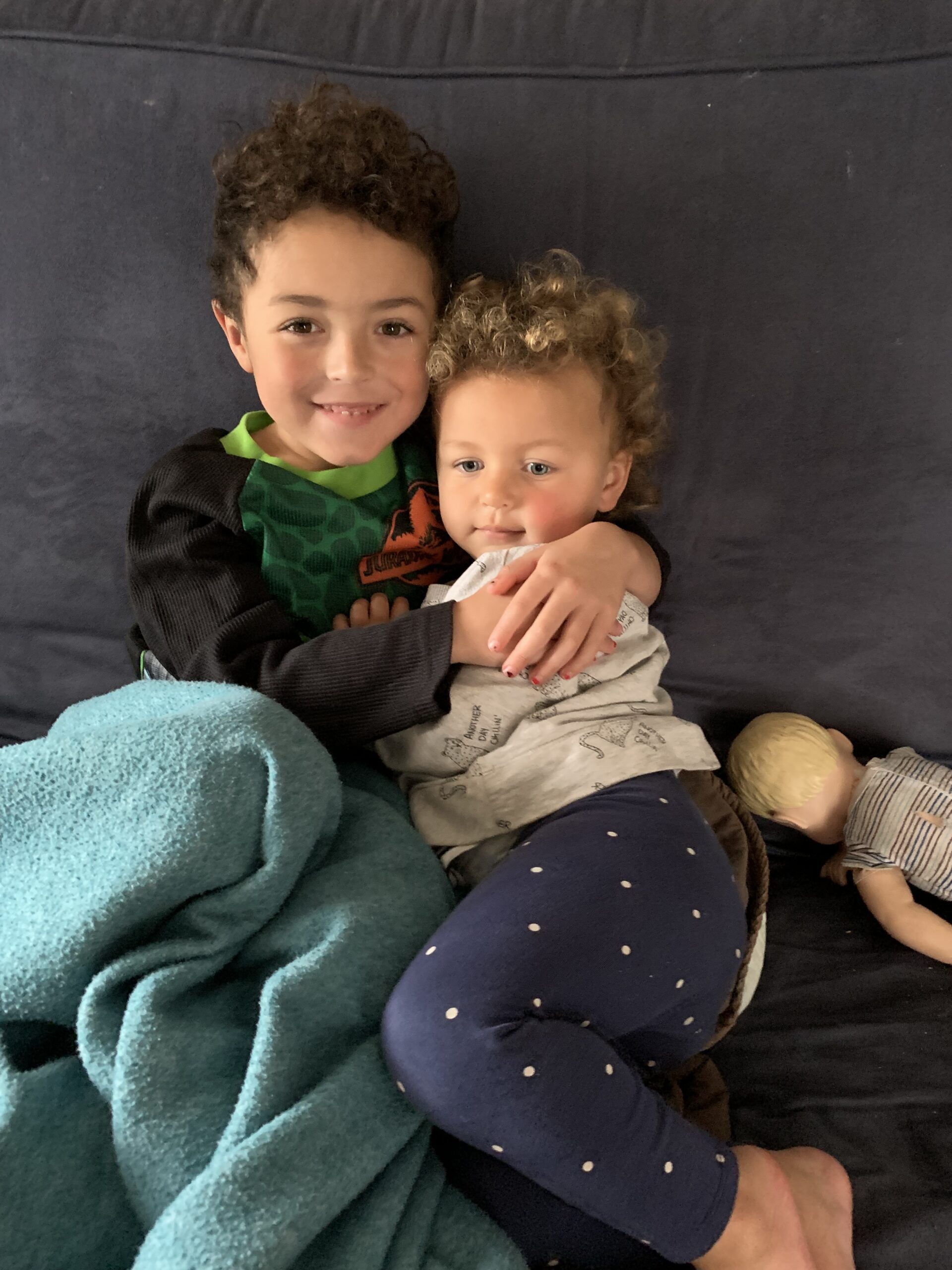Blog
Thomas Wright Scott (born May 19, 1948) is an American saxophonist, composer, and arranger. He was a member of The Blues Brothers and led the jazz fusion group L.A. Express.
Scott was born in Los Angeles, California, US. He is the son of film and television composer Nathan Scott, who had more than 850 television credits and more than 100 film credits as a composer, orchestrator, and conductor, including the theme songs for Dragnet and Lassie.
Tom Scott’s career began as a teenager as leader of the jazz ensemble Neoteric Trio, and the band Men of Note. After that, he worked as a session musician. In 1970, Quincy Jones said of him: “Tom Scott, the saxophonist; he’s 21, and out of sight! Plays any idiom you can name, and blows like crazy on half a dozen horns.”
more...Cornelius “Sonny” Fortune (May 19, 1939 – October 25, 2018) was an American jazz saxophonist. Fortune played soprano, alto, tenor, and baritone saxophones, clarinet, and flute.
He was born in Philadelphia, Pennsylvania, United States. After moving to New York City in 1967, Fortune recorded and appeared live with drummer Elvin Jones‘s group. In 1968, he was a member of Mongo Santamaría‘s band. He performed with singer Leon Thomas, and with pianist McCoy Tyner (1971–73). In 1974, Fortune replaced Dave Liebman in Miles Davis‘s ensemble, remaining until spring 1975, when he was succeeded by Sam Morrison. Fortune can be heard on the albums Big Fun, Get Up With It, Agharta, and Pangaea, the last two recorded live in Japan.
Fortune joined Nat Adderley after his brief tenure with Davis, then formed his own group in June 1975, recording two albums for the Horizon Records. During the 1990s, he recorded several albums for Blue Note. He has also performed with Roy Brooks, Buddy Rich, George Benson, Rabih Abou Khalil, Roy Ayers, Oliver Nelson, Gary Bartz, Rashied Ali, and Pharoah Sanders, as well as appearing on the live album The Atlantic Family Live at Montreux (1977).
Fortune died of a stroke at the age of 79 in October 2018.
more...
Cecil McBee (born May 19, 1935) is an American jazz bassist. He has recorded as a leader only a handful of times since the 1970s, but has contributed as a sideman to a number of jazz albums.
McBee was born in Tulsa, Oklahoma, United States. He studied clarinet at school, but switched to bass at the age of 17, and began playing in local nightclubs. After gaining a music degree from Ohio Central State University, McBee spent two years in the U.S. Army, during which time he conducted the band at Fort Knox. In 1959, he played with Dinah Washington, and in 1962 he moved to Detroit, Michigan, where he worked with Paul Winter‘s folk-rock ensemble between 1963 and 1964.
more...Although many variations are possible, the most basic form of the Tientos is as follows :
Guitar introduction – The guitarist sets the basic tempo and key
Temple – The singer sings fragments – estribillos – (le le, la, etc.) to establish thekey, pulse and mood of the piece.
The dancer’s llamada – call/cue the guitarist performs double time here. The dancer generally performs footwork.
First Letra – The singer sings the first verse, and the dancer interprets thisimpressionistically and rhythmically.
After the 1st line of the song, the singer may take a 1 or 2 compás break – the respira – and the dancer usually inserts footwork here.
Guitar falseta – a short melodic phrase that the dancer interprets lyrically.
First Escobilla – The dancer’s 1st prolonged footwork section. This ends with a llamada call in the 2nd verse.
Second Letra – Similar or identical to the 1st verse.
Second Escobilla = The dancer’s final long footwork section.
Macho – It is common for a flamenco song to end in a faster song/rhythm, and it is usually the Tangos for Tientos. The most traditional Tangos lyrics performed here are the song, “Triana.”
more...The fourth week of performances. Thursday May 18th 730pm at the History Theatre. Music by Raymond Berg, Kam Markworth. Christian Wheeler and mick LaBriola. https://www.historytheatre.com/2022-2023/defeat-jesse-james

Zamya Theater working with the Homeless Community performs Challenge to Change at SPNN Studio with a filming session. Music provided by mick laBriola
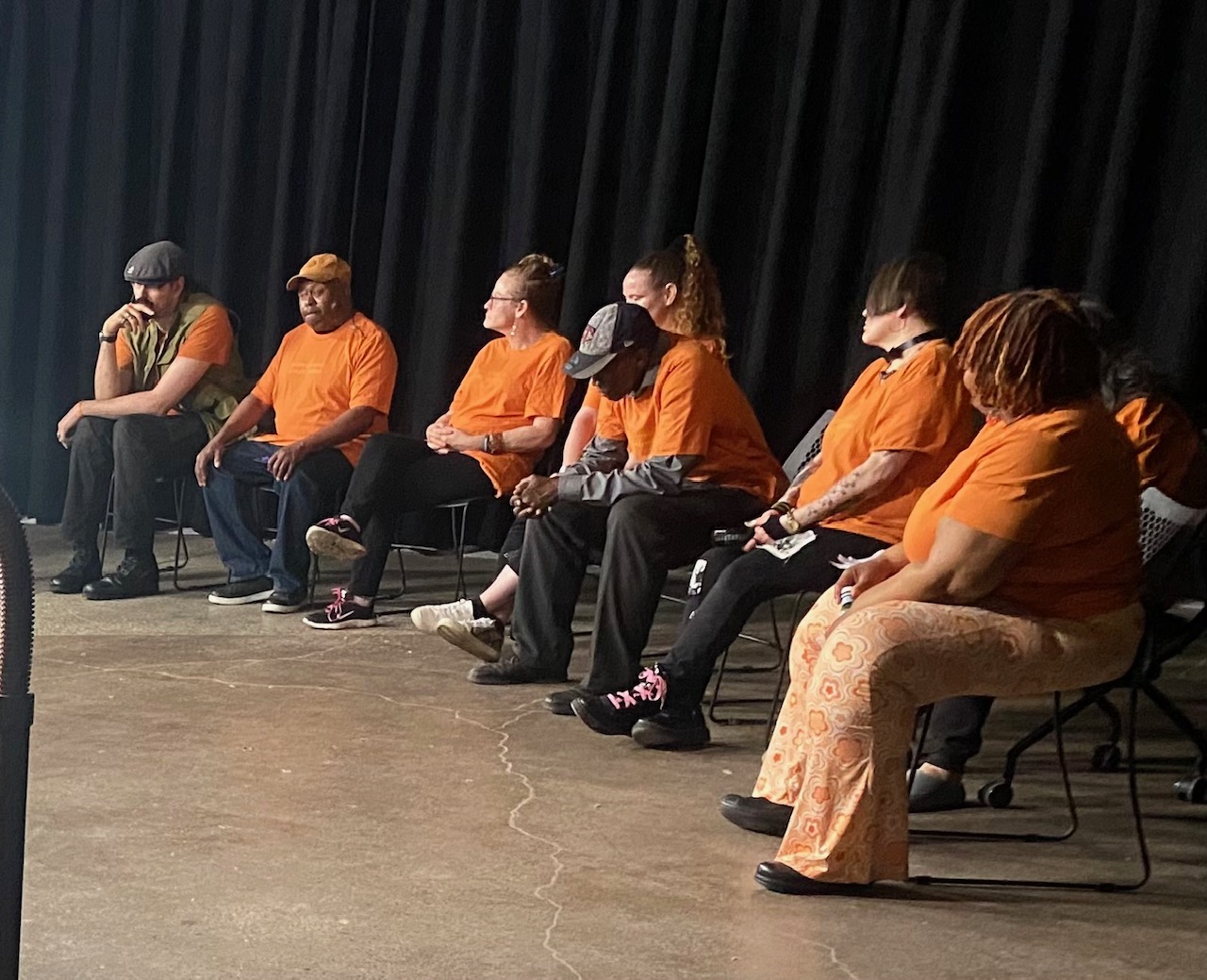
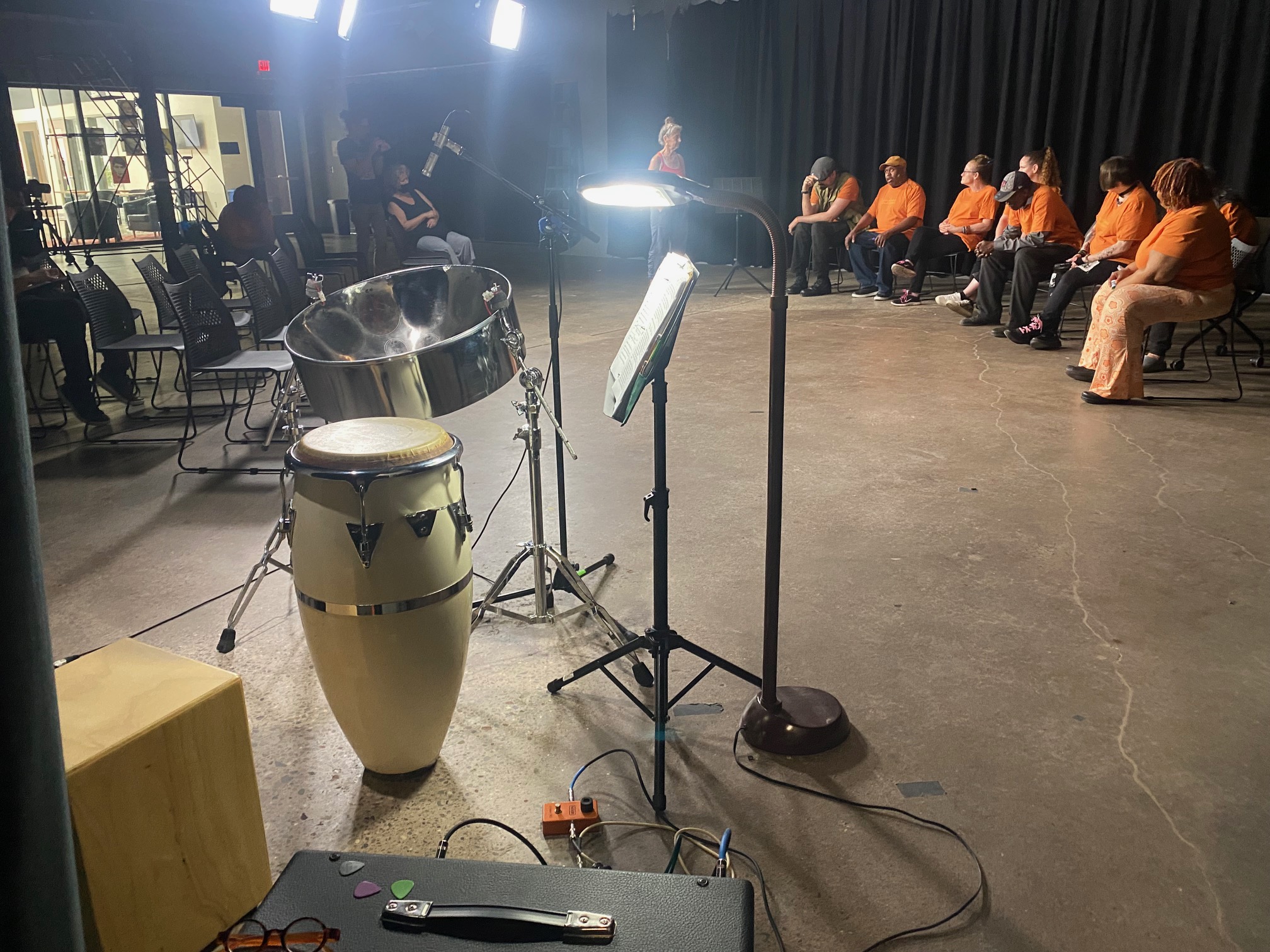
Made with narrowband filters, this cosmic snapshot covers a field of view about the size of the full Moon within the boundaries of the constellation Cygnus. It highlights the bright edge of a ring-like nebula traced by the glow of ionized sulfur, hydrogen, and oxygen gas. Embedded in the region’s interstellar clouds of gas and dust, the complex, glowing arcs are sections of bubbles or shells of material swept up by the windfrom Wolf-Rayet star WR 134, brightest star near the center of the frame. Distance estimates put WR 134 about 6,000 light-years away, making the frame over 50 light-years across. Shedding their outer envelopes in powerful stellar winds, massive Wolf-Rayet stars have burned through their nuclear fuel at a prodigious rate and end this final phase of massive star evolution in a spectacular supernova explosion. The stellar winds and final supernovae enrich the interstellar material with heavy elements to be incorporated in future generations of stars.
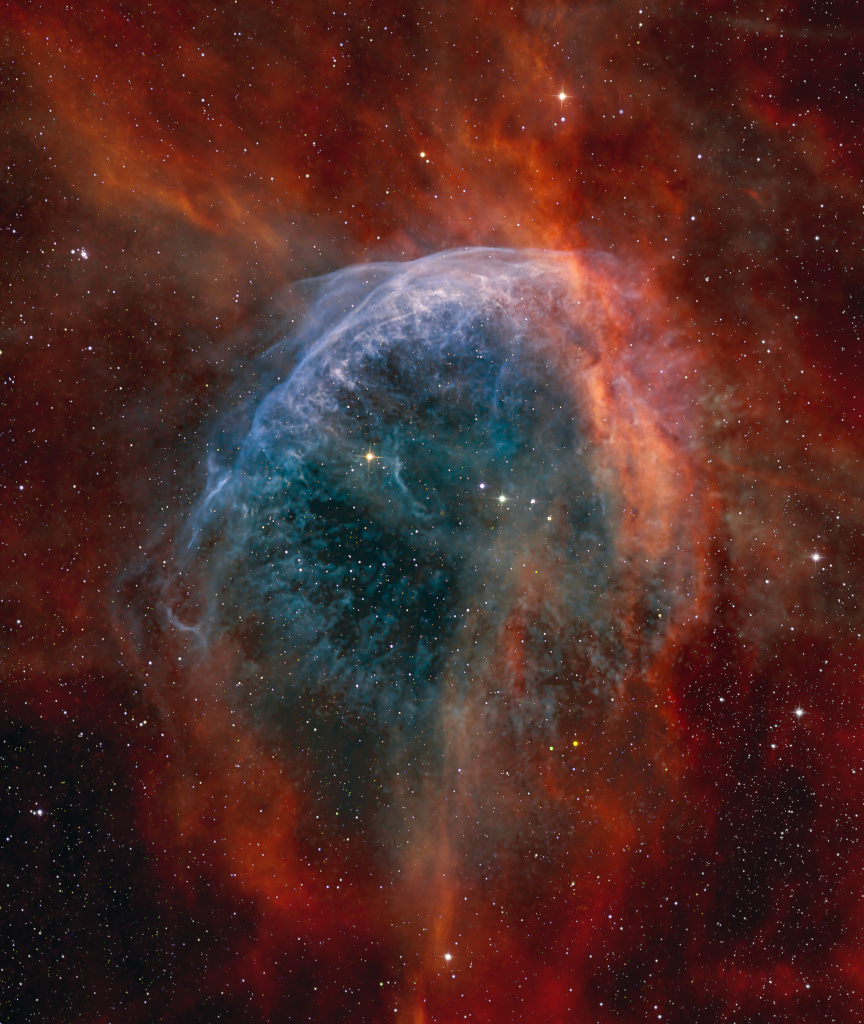
Richard Christopher Wakeman CBE (born 18 May 1949) is an English keyboardist and composer best known as a former member of the progressive rock band Yes across five tenures between 1971 and 2004, and for his solo albums released in the 1970s. AllMusic describes Wakeman as a “classically trained keyboardist extraordinaire who plied his trade with Yes and developed his own brand of live spectacular in a solo act.”
Born and raised in West London, Wakeman quit his studies at the Royal College of Music in 1969 to become a full-time session musician. His early sessions included “Space Oddity“, among other tracks, for David Bowie, and songs by Elton John, Marc Bolan, Cat Stevens, and Lou Reed. In 1970 Wakeman joined the folk rock group The Strawbs, during which his virtuosity gained national press coverage. He left in 1971 to join Yes, with whom he played on some of their most influential albums across two stints until 1980. During this time Wakeman began a solo career in 1973 and became an iconic and prominent figure in progressive rock. His highest-selling and most acclaimed albums are his first three: The Six Wives of Henry VIII (1973), the UK number-one Journey to the Centre of the Earth (1974), and The Myths and Legends of King Arthur and the Knights of the Round Table (1975), all concept albums. In 1974 he formed his band, The English Rock Ensemble, with which he toured worldwide and continues to perform, and went on to score his first major film, Lisztomania (1975).
Wakeman had uneven success in the next two decades following a change in musical fashion and financial issues from two divorces. His most popular album was the conceptual rocker 1984 (1981), which was followed by the minor pop hit single “Glory Boys” from Silent Nights (1985). He expanded into other areas such as hosting the television show Gastank, composing for television and film, forming record labels, and producing his first New-age, ambient, and Christian music with Country Airs (1986) and The Gospels (1987), respectively. In 1989 he reunited with former Yes bandmates for Anderson Bruford Wakeman Howe, which led to his third period in the group until 1992. Wakeman’s most significant album of the 1990s was Return to the Centre of the Earth (1999), his first UK Top 40 album in 18 years, and his piano album Piano Portraits(2017) produced his first UK Top 10 album since 1975. Starting in 2009, Wakeman revisited his three hit albums of the 1970s by performing them live with new and expanded arrangements. From 2016 to 2020, Wakeman was a member of Yes Featuring Jon Anderson, Trevor Rabin, Rick Wakeman. He continues to record albums and perform concerts worldwide in various capacities; his most recent album is A Gallery of the Imagination (2022).
Wakeman’s discography includes over 90 solo albums spanning a range of musical styles. He has also gained notoriety for his appearances on the television programs Live at Jongleurs, Countdown, Grumpy Old Men, and Watchdog, and for his radio show on Planet Rock that aired from 2005 to 2010. Wakeman has written an autobiography and two memoirs. In 2017, he was inducted into the Rock and Roll Hall of Fame as a member of Yes. He was awarded a CBE for his services to music and broadcasting in 2021.
https://www.youtube.com/watch?v=YJ9W2pZwvlY
more...Lou Bennett (May 18, 1926, Philadelphia – February 10, 1997, Paris) was an American jazz organist.
Bennett first played bebop on piano, but started playing organ in 1956 after hearing Jimmy Smith. Bennett toured the U.S. with an organ trio between 1957 and 1959, and then moved to Paris in 1960. There he recorded and performed at the Blue Note with Jimmy Gourley and Kenny Clarke (as well as Rene Thomas); he returned to America only once, for the 1964 Newport Jazz Festival. He also recorded in the 1960s with Philip Catherine, Shirley Bunnie Foyand Franco Manzecchi. In the 1980s he played in his own quintet with Gerard Badini, among others. During this period he also toured extensively throughout Spain, including, Almeria, Barcelona, La Coruna, Segovia, and Madrid.
more...Fifth in a series of Rhythm Roots Workshops at Cerenity Humboldt Senior Care (https://cerenityseniorcare.org/cerenity-senior-care-humboldt-st-paul-mn/) Exploring rhythms from Egypt, Algeria, Turkey, Dominican Republic, Spain and Brazil. Running on Wednesdays 130-3pm thru June 14th 2023.
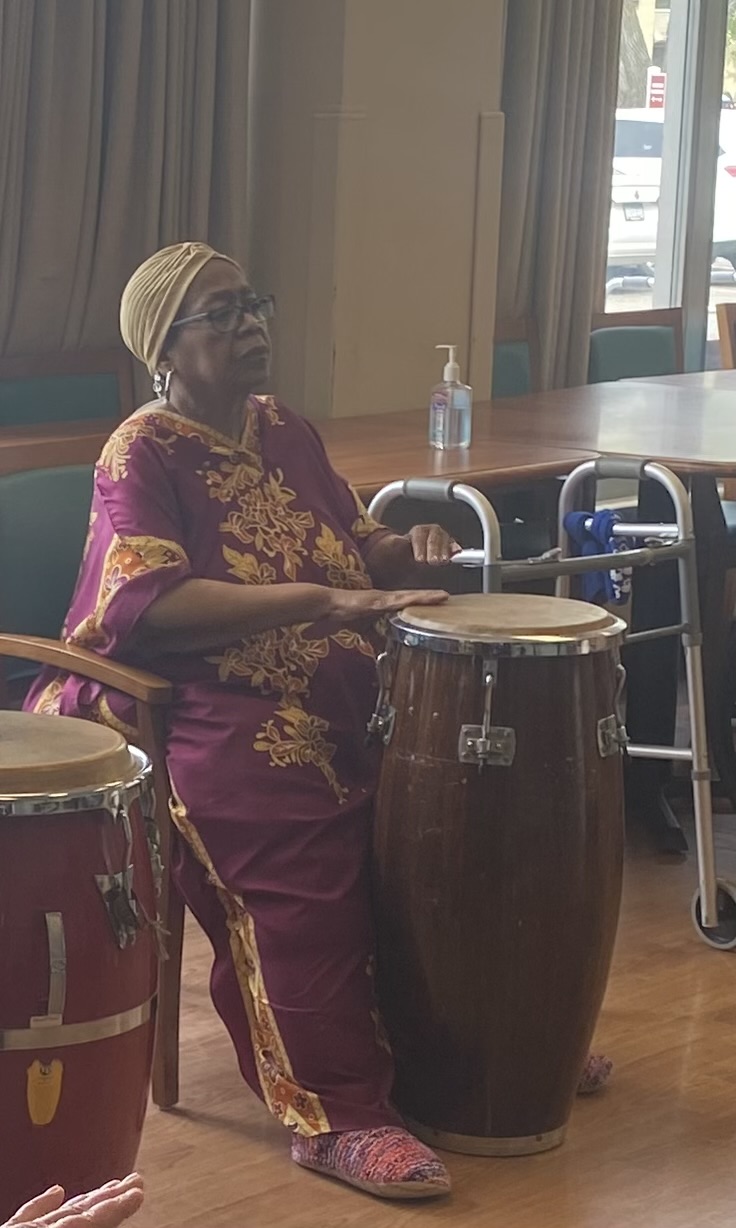
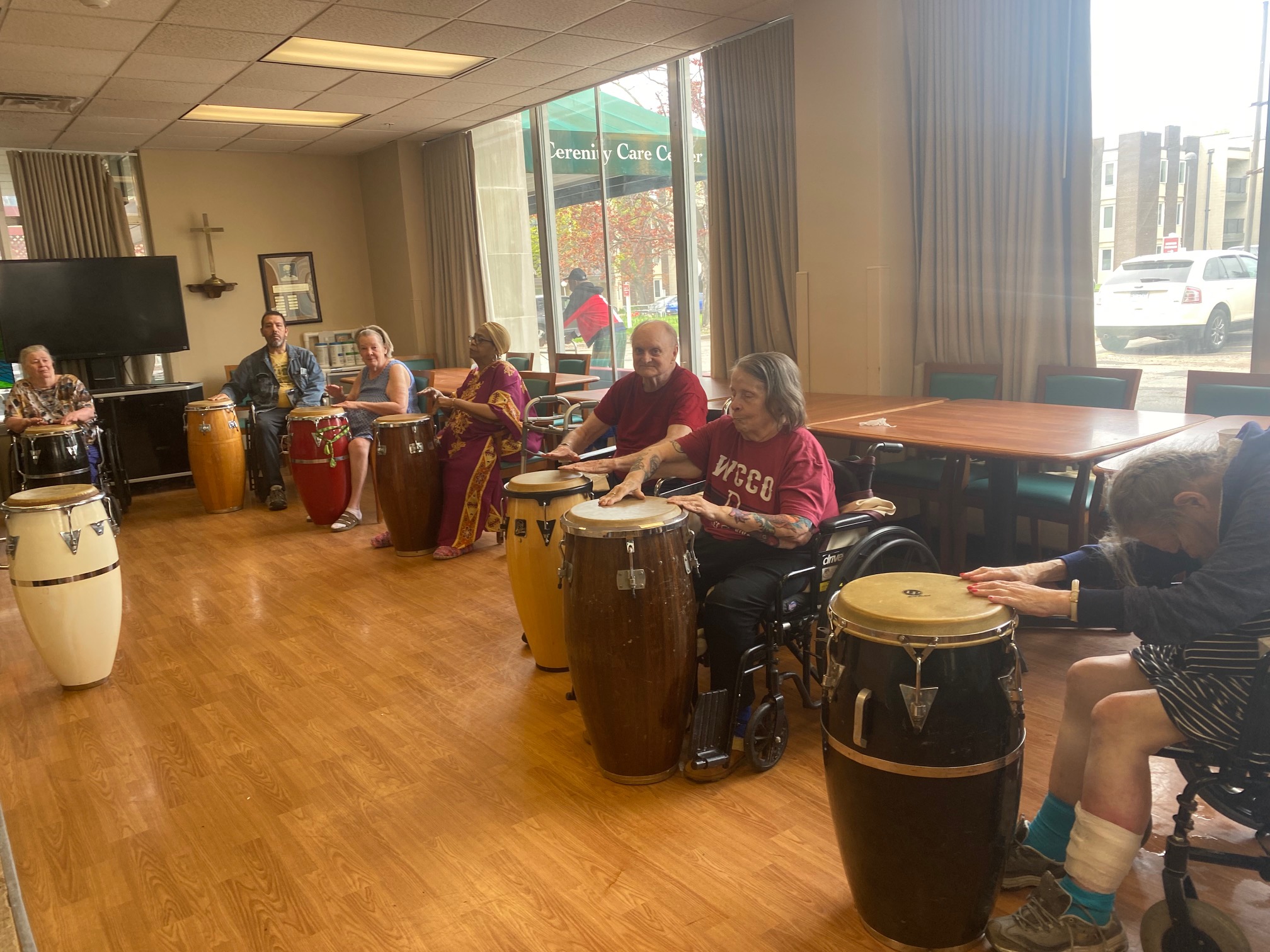
the Eagle Nebula, however, shows the bright region is actually a window into the center of a larger dark shell of dust. Through this window, a brightly-lit workshop appears where a whole open cluster of stars is being formed. In this cavity, tall pillars and round globules of dark dust and cold molecular gas remain where stars are still forming. Already visible are several young bright blue stars whose light and winds are burning away and pushing back the remaining filaments and walls of gas and dust. The Eagle emission nebula, tagged M16, lies about 6500 light years away, spans about 20 light-years, and is visible withbinoculars toward the constellation of the Serpent (Serpens). This picture involved long and deep exposures and combined three specific emitted colors emitted by sulfur (colored as yellow), hydrogen (red), and oxygen (blue).
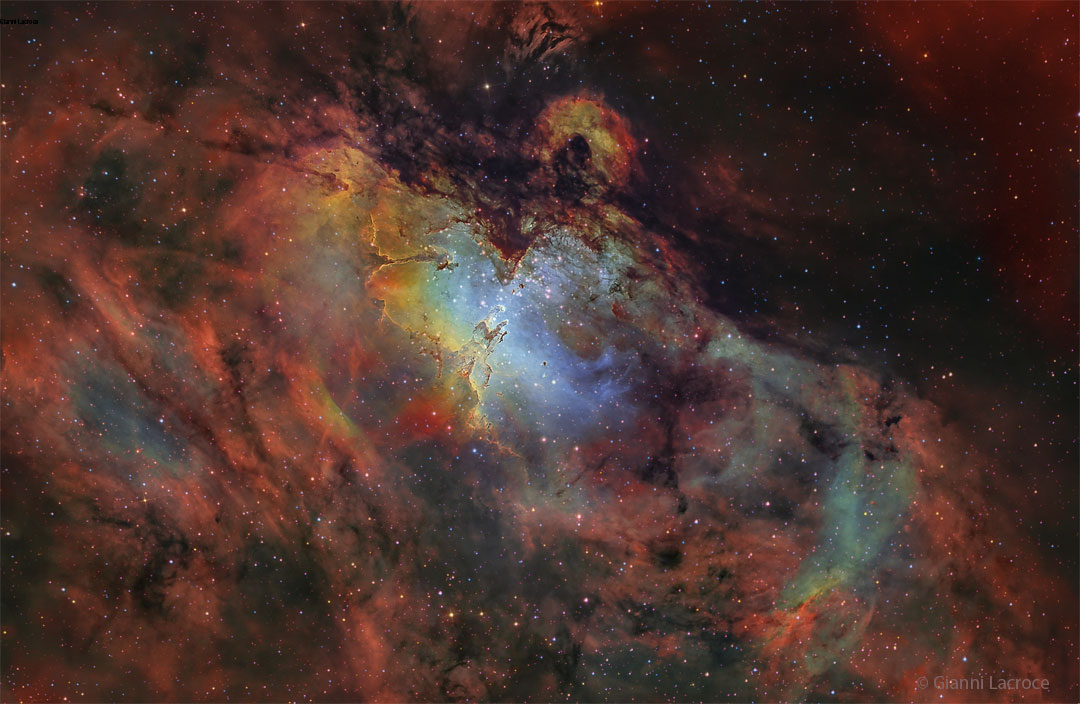
John Lenwood “Jackie” McLean (May 17, 1931 – March 31, 2006) was an American jazz alto saxophonist, composer, bandleader, and educator, and is one of the few musicians to be elected to the DownBeat Hall of Fame in the year of their death.
McLean was born in New York City. His father, John Sr., played guitar in Tiny Bradshaw‘s orchestra. After his father’s death in 1939, Jackie’s musical education was continued by his godfather, his record-store-owning stepfather, and several noted teachers. He also received informal tutoring from neighbors Thelonious Monk, Bud Powell, and Charlie Parker. During high school McLean played in a band with Kenny Drew, Sonny Rollins, and Andy Kirk, Jr. (the saxophonist son of Andy Kirk).
more...William Scott Bruford (born 17 May 1949) is an English former drummer and percussionist who first gained prominence as a founding member of the progressive rock band Yes. After leaving Yes in 1972, Bruford spent the rest of the 1970s recording and touring with King Crimson (1972–1974) and Roy Harper (1975), and touring with Genesis (1976) and U.K. (1978). In 1978, he formed his own group, Bruford, which was active until 1980.
During the 1980s, Bruford returned to King Crimson for three years (1981–1984), collaborated with several artists (including Patrick Moraz and David Torn), and formed his own electric jazz band Earthworks in 1986. He then played with his former Yes bandmates in Anderson Bruford Wakeman Howe, which eventually led to a very brief second stint in Yes. Bruford played in King Crimson for his third and final tenure from 1994 to 1997, then continued with a new acoustic configuration of Earthworks.
On 1 January 2009, Bruford retired from professional drumming, only briefly returning for a few private gigs. He has pursued other projects since then, including the operation of his two record labels, Summerfold and Winterfold, releasing an autobiography in 2009, and speaking and writing about music. In 2016, after four and a half years of study, Bruford received a PhD in Music from the University of Surrey. That year, Bruford ranked No. 16 on Rolling Stone‘s list of the “100 Greatest Drummers of All Time”. In 2017, Bruford was inducted into the Rock and Roll Hall of Fame as a member of Yes.
more...Henry St. Claire Fredericks Jr. (born May 17, 1942), better known by his stage name Taj Mahal, is an American blues musician. He plays the guitar, piano, banjo, harmonica, and many other instruments, often incorporating elements of world music into his work. Mahal has done much to reshape the definition and scope of blues music over the course of his more than 50-year career by fusing it with nontraditional forms, including sounds from the Caribbean, Africa, India, Hawaii, and the South Pacific.
Mahal was born Henry St. Claire Fredericks Jr. on May 17, 1942, in Harlem, New York City. Growing up in Springfield, Massachusetts, he was raised in a musical environment: his mother was a member of a local gospel choir and his father, Henry Saint Claire Fredericks Sr., was an Afro-Caribbean jazz arranger and piano player. His family owned a shortwave radio which received music broadcasts from around the world, exposing him at an early age to world music. Early in childhood he recognized the stark differences between the popular music of his day and the music that was played in his home. He also became interested in jazz, enjoying the works of musicians such as Charles Mingus, Thelonious Monk and Milt Jackson. His parents came of age during the Harlem Renaissance, instilling in their son a sense of pride in his Caribbean and African ancestry through their stories.
more...Walter Dewey Redman (May 17, 1931 – September 2, 2006) was an American saxophonist who performed free jazz as a bandleader and with Ornette Coleman and Keith Jarrett.
Redman mainly played tenor saxophone, though he occasionally also played alto, the Chinese suona (which he called a musette), and clarinet. His son is saxophonist Joshua Redman.
Redman was born in Fort Worth, Texas. He attended I.M. Terrell High School, and played in the school bandwith Ornette Coleman, Prince Lasha, and Charles Moffett. After high school, he briefly enrolled in the electrical engineering program at the Tuskegee Institute in Alabama but became disillusioned with the program and returned home to Texas. In 1953, he earned a bachelor’s degree in Industrial Arts from Prairie View Agricultural and Mechanical University. While at Prairie View, he switched from clarinet to alto saxophone, then to tenor. After graduating, he served for two years in the U. S. Army.
more...Paul Quinichette (May 17, 1916 – May 25, 1983) was an American jazz tenor saxophonist. He was known as the “Vice President” or “Vice Prez” for his emulation of the breathy style of Lester Young, whose nickname was “The President”, or simply “Prez”. Young called Quinichette “Lady Q”.
Quinichette was born in Denver, Colorado, United States. He had clarinet and alto saxophone lessons as a child, before switching to tenor saxophone. Around the age of 13, he had informal lessons from Lester Young.
more...More Posts
- Count Basie
- World Fusion Moshiko Givan
- Daily Roots Prince David
- NPD Breach of Personal Info
- When They Go Low We Go High
- Cosmos IC 5146
- Robert Plant
- Isaac Hayes
- El Fary
- Frank Rosolino
- World Music La Falfula Groove Iraqi
- Daily Roots Michael Prophet & Yabby You
- Cosmos UGC 11861
- Johnny Nash
- Fumio Hayasaka
- Eddie Durham
- Ginger Baker
- Jimmy Rowles
- World Music La Falfula Groove Iraqi
- Daily Roots King Tubby
